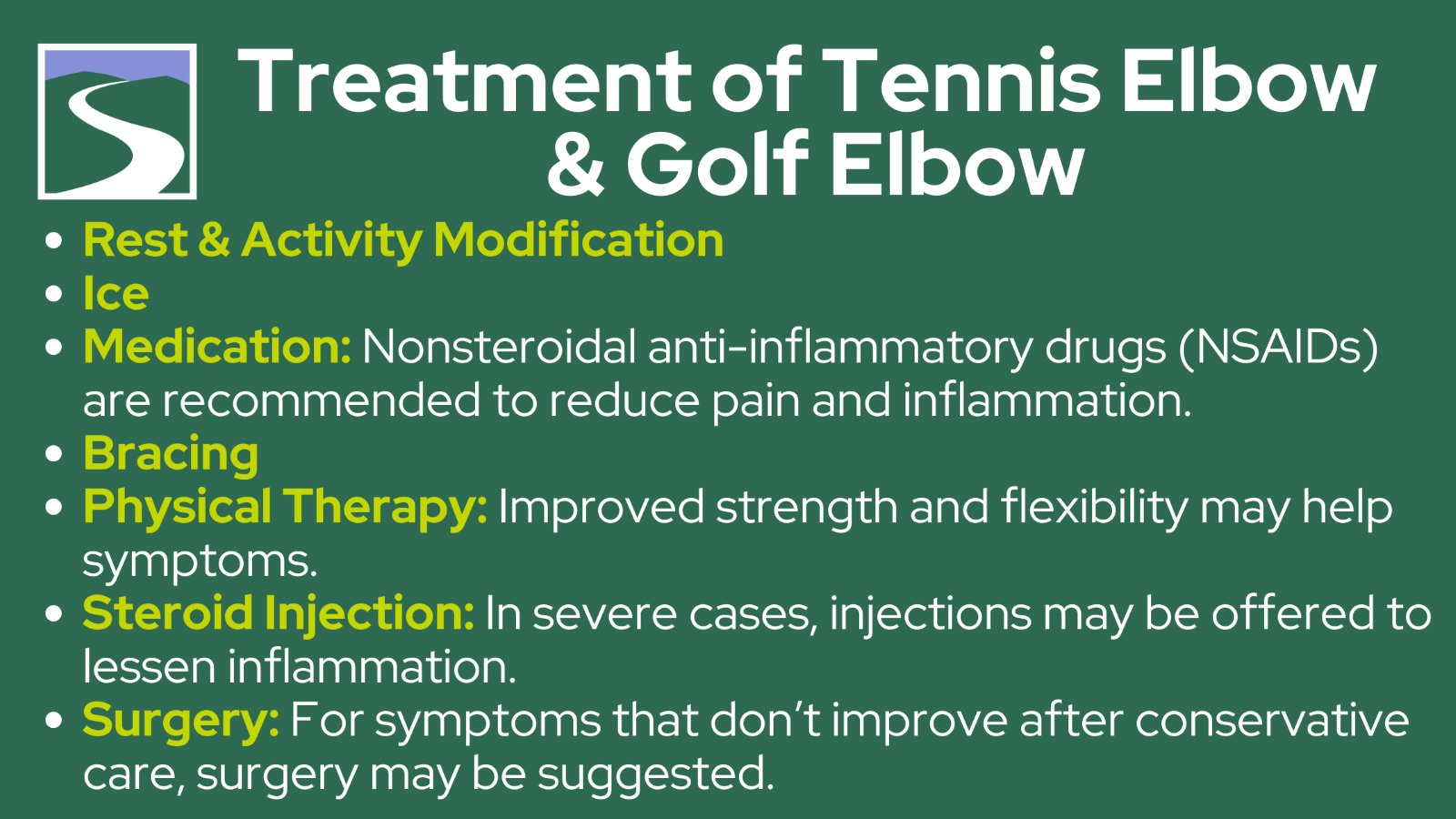June 11, 2024
Golf and Tennis Elbow: Expert Advice on Symptoms and Solutions
Golf elbow (medial epicondylitis) and tennis elbow (lateral epicondylitis) are common injuries among recreational and elite athletes. You don’t have to play golf or tennis to have the conditions. It is very common in individuals engaged in repetitive arm movements, such as carpenters, painters, and plumbers. While both conditions are forms of tendinitis affecting the elbow and forearm, they exhibit slightly different symptoms and require tailored treatment strategies.
Learn about Foundation Orthopedics
Symptoms of Tennis Elbow
- Pain and tenderness on the outside of the elbow, particularly concentrated around the lateral epicondyle.
- Pain may extend along the forearm muscles
- Weakness when gripping or lifting objects
- Symptoms worsen during activities requiring gripping or wrist extension, such as lifting weights or turning a doorknob.
Symptoms of Golf Elbow
- Pain and tenderness localized on the inside of the elbow, primarily surrounding the medial epicondyle.
- Pain may radiate along the forearm flexors
- Stiffness of the elbow after a period of stillness
- Notable weakness experienced during gripping or twisting movements of the wrist.
- Exacerbation of symptoms during actions involving gripping or wrist flexion, like shaking hands, using a hammer, or swinging a golf club.
Treatment of Golf Elbow and Tennis Elbow
Golf elbow and tennis elbow have similar symptoms and treatments, but they come from different tendons and repetitive movements. It's important to diagnose them correctly to make effective treatment plans. Seeing an orthopedic doctor helps assess them accurately and create personalized treatments, speeding up recovery and restoring function.

When to Seek Treatment
You should seek help for golf or tennis elbow if you experience persistent elbow pain, especially during activities involving gripping or wrist movements, and if the pain doesn't improve with rest or home treatments like ice and over-the-counter pain relievers. Additionally, if the pain limits your ability to perform daily activities or you notice any swelling, weakness, or numbness in your arm or hand, it's important to consult an orthopedist for proper evaluation and treatment recommendations.
 Dr. David Hoang is an orthopedic surgeon with a specialty in sports medicine at Foundation Orthopedics.
Dr. David Hoang is an orthopedic surgeon with a specialty in sports medicine at Foundation Orthopedics.
